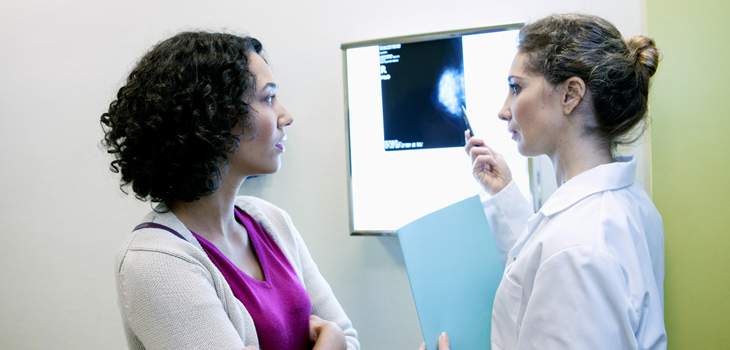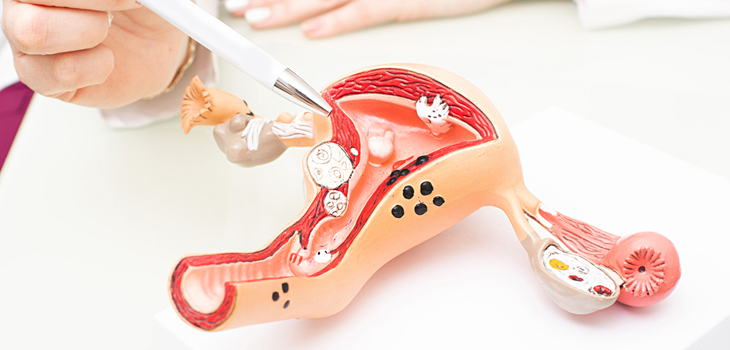Gynecologic Cancer
Gynecologic cancer refers to any cancer that develops in a woman’s reproductive organs. It is a catch-all term for any and all cancers that can emerge in or on a woman’s reproductive organs and genital area. Cancer has always been named after the site in the body where it first appears. Gynecologic cancers start in a variety of locations within a woman’s pelvis, which would be the area beneath the stomach and between the hip bones. Gynecologic cancer includes cancers of the vulva, uterus, fallopian tubes, vagina, cervix, and ovaries.
Different Gynecologic Cancers
There are several types of gynecologic cancer, each with its own symptoms, signs, risk factors, and prevention programs. Almost all women are at risk for gynecological cancers, and the risk increases as they age. Treatment is most effective when gynecologic cancers are discovered early. It is critical to pay close attention to the body in order to identify the warning signs and symptoms of gynecologic cancer.
Abnormal vaginal bleeding, for example, should be reported to a doctor as soon as possible After menopause, any vaginal bleeding must be disclosed to a physician. If the woman did not go through menopause but has noticed that her menstrual cycles are heavier, last longer than usual, or she has unexpected bleeding between periods, she should see a doctor. Seek medical advice if any other warning signs persist for two weeks in a row and are not natural. Symptoms could be caused by something other than cancer, however, the only way to find out is to seek medical attention. Clinical manifestations differ from person to person, and each gynecologic cancer has its own set of symptoms and signs. Taking a gynecologic cancer screening test is one of the indisputable methods to confirm if the cause is gynecologic cancer or something else.
Although there are screening tests for a few of the Gynecologic cancers, there is no validated screening test for others. This implies that it’s critical for women to be concerned about the potential signs and symptoms of gynecologic cancers, as well as to get to know their bodies well enough to notice if anything changes. The various types of Gynecologic cancers its causes and symptoms are listed below.
Cervical Cancer
Cervical cancer occurs is a type of cancer that occurs when a women’s cervix is affected by cancer. The cervix links the vaginal and uterine cavities. Human papillomavirus (HPV), a prevalent virus that can be transmitted from one person to another during sex, is responsible for nearly all cervical cancer cases. There are numerous types of HPV, a few of which can cause changes on a woman’s cervix that can eventually lead to cervical cancer, while others can cause genital or skin warts.
Causes
Below are a few of the risk factors that may lead to Cervical cancer
- Human papillomavirus infection.
- HIV or some other condition that reduces the body’s immunity.
- Smoking
- Giving birth more than two times.
- Sexually active with several partners.
- Long-term use of birth control pills
Symptoms
Cervical cancer symptoms can include:
- Bleeding during a period or after engaging in sexual activity
- Ache during vaginal intercourse
- Longer or heavier than usual menstrual cycles
- Vaginal discharge that is unusual
- Menopausal vaginal bleeding
Advanced cervical cancer symptoms may include:
- Excessive exhaustion
- Ache or swelling in the legs
- Lower backache

Uterine cancer
Uterine cancer is the most prevalent type of cancer that affects a woman’s reproductive system. The uterus is an organ located inside a woman’s pelvis that is responsible for the growth of a baby during pregnancy. Endometrial cancer, which occurs in the uterine lining, and uterine sarcomas are the two most common types of uterine cancer. In uterine cancer, healthy cells in the uterus mutate and grow uncontrollably, resulting in the growth of a lump called tumor. A tumor can be cancerous or noncancerous. A malignant tumor is one that can grow and spread to the rest of the body. A benign tumor can grow but does not spread to the rest of the body.
Causes
The exact cause of Uterine cancer is unknown but below are a few of the risk factors that may lead to Uterine cancer:
- Over the age of 50.
- Obesity is defined by an unusually elevated and undesirable amount of fat.
- Taking estrogen without progesterone to replace hormones during menopause.
- Finding it difficult to get pregnant or had fewer than 5 menstrual cycles in the year preceding menopause.
- Have blood relatives who’ve been diagnosed with breast, colon, uterine, or ovarian cancer.
Symptoms
Uterine cancer symptoms may include:
- Bleeding or watery discharge accompanied by a strong odor
- Bleeding amid menstrual cycles or after menopause
- Abdominal discomfort or pain
- Having difficulty passing urine or experiencing pain when using the restroom
- Pain while having sex
Ovarian cancer
Ovarian cancer is a type of cancer in which healthy cells in one or both ovaries of a woman undergo mutation and uncontrollable growth. Healthy body tissue is destroyed when these cells proliferate, invade, and multiply rapidly. There are 2 ovaries in the female reproductive tract, one on either side of the uterus. The ovaries are about the size of an almond, are responsible for the production of eggs and the hormones estrogen and progesterone. It is the 7th most common type of cancer affecting women.
Causes
The exact cause of ovarian cancer is unknown but below are a few of the risk factors that may lead to Ovarian cancer:
- Have blood relatives who’ve been diagnosed with breast, colon, uterine, or ovarian cancer.
- Women aged 45 years and above are at a higher risk.
- Having a BRCA1 or BRCA2 genetic defect or mutation, or one associated with Lynch syndrome
- Have or had breast, uterine, or colon cancer
- Having an Eastern European or Ashkenazi Jewish ancestry makes the individual more at risk of getting ovarian cancer.
- Diagnosed with Endometriosis.
- Never had a child or had difficulty getting pregnant
- Taking estrogen without progesterone to replace hormones during menopause.
Symptoms
Ovarian cancer symptoms may include:
- Bloating in the abdomen
- Abdominal enlargement
- Abdominal or pelvic pain
- Appetite loss
- Feeling satiated soon after eating
- Indigestion
- Urge to pass urine frequently or urgently
- Sudden change bowel habits, such as constipation
- Sudden gain or loss in weight
- Unexplained exhaustion
Fallopian tube cancer
Fallopian tube cancer, also widely recognized as tubal cancer, occurs in the fallopian tubes, which link up the ovaries to the uterus. It is possible to develop fallopian tube cancer in one or both tubes. Cancer of the fallopian tube is a rare type of cancer because it is more likely to spread from other parts of the body, such as the ovaries or endometrium than to originate in them.
Causes
The exact cause of Fallopian tube cancer is unknown and as a rare type of cancer only assumptions have been made based on past cases. Below is a list few of the risk factors noted to be common among most of the cases with Fallopian tube cancer:
- Never had a child
- Never, ever breastfeed a child.
- Have never used birth control pills.
- Having a genetic defect or mutation in BRCA1 or BRCA2
- Have immediate relatives who had breast, colon, uterine, or ovarian cancer.
- One hypothesis suggests that long-term infections of the reproductive tract may cause Fallopian tube cancer, but this has yet to be proven.
- Fallopian tube cancer can happen at any age, but it is most common among women older than 50 years.
Symptoms
Symptoms of fallopian tube cancer are not always present. Once it does show symptoms, they can be as follows:
- Bloating of the abdominal area that would not go away with a dietary change or physical exercise
- Consistent ache in the lower pelvic area.
- Pressure on the lower intestine or bladder
- Feel as if you can’t completely empty your bowel or bladder when you go to the toilet
- Abnormal vaginal bleeding or discharge, notably bleeding after menopause
- A lump in the stomach
Vulval cancer
Vulvar cancer is cancer that forms on the outer surface of the female genitalia. A vulva is the area of skin surrounding the urethra, vagina, clitoris, and labia. Symptoms of vulvar cancer often present as lumps or sores on the vulva, accompanied by itching, and generally appear on the outer vaginal lips.
Vulvar cancer can be classified into:
- Primary vulvar cancer- Cancer that begins in the vulva.
- Secondary vulvar cancer- Cancer spreads from another part of the body to the vulva.
Squamous cell carcinoma, vulvar melanoma, adenocarcinoma, sarcoma, and verrucous carcinoma are all types of vulvar cancer.
Causes
Although the true mechanism of vulvar cancer is unconfirmed, certain risk features tend to increase your chances of developing the disease. These risk factors include:
- Vulvar cancer is more common as people get older, but it can strike at any age. Women around 65 years of age are more vulnerable to this cancer.
- Diagnosed with the human papillomavirus (HPV).
- Cigarette smoking raises the risk of vulvar cancer.
- Immune system defect.
- Having a history of vulvar pre-cancerous conditions
- Having a skin condition that affects the vulva
Symptoms
Vulval cancer symptoms may include:
- Stinging, burning, or ache at a vulva point
- A lump, sore, inflammation, or warty growth on the vulva
- Patches of thickened or raised skin on the vulva that can be red, or brown
- A vulva mole that changes the color or shape.
- A vulvar lesion or sore that oozes pus, blood, or discharge
- Lymph nodes on groin that have hardened or swollen
Vaginal cancer
Vaginal cancer grows in the muscular tube that links the uterus to the outer genitals. The cells lining the surface of the vagina also referred to as the birth canal, are the most commonly affected by vaginal cancer. Many types of cancer can spread towards the vagina from elsewhere, but cancer that begins from the vagina is rare. Treatment for vaginal cancer that has spread further than the vagina could be far more difficult thus it is better to detect it in early stage and begin treatment immediately.
Causes
There is no way to predict whether or not an individual will develop vaginal cancer. A few women develop the cancers despite not being at high risk. Several factors, however, may significantly raise their chances of developing vaginal cancer, including:
- Advanced age, such as greater than 60 years.
- Have been they exposed to DES
- Experienced precancerous lesions or cervical cancer
- Diagnosed with HIV/AIDS or HPV infection
- Habitual alcohol drinker
- Cigarette smoking raises the risk of vaginal cancer.
- Diagnosed with vaginal intraepithelial neoplasia.
Symptoms
Symptoms of vaginal cancer are often absent, particularly in the initial stages. Once they do occur, vaginal cancer symptoms may include:
- Bleeding or blood-stained discharge from the vaginal area that is not associated with a period
- Bleeding following sex
- Discomfort in the pelvic region
- A lump inside the vagina
- Blood in the urine, difficulty passing the urine, or a frequent need to use the restroom
- Discomfort in the rectum

Conclusion
Consult a doctor if you have any signs or symptoms of gynecologic cancer, such as abnormal vaginal bleeding. Since gynecologic cancer often does not cause symptoms, it is best to consult with your primary care physician during routine medical exams. You can also consult with us at Dr. Mehta’s Hospitals to learn more about gynecologic cancer.

